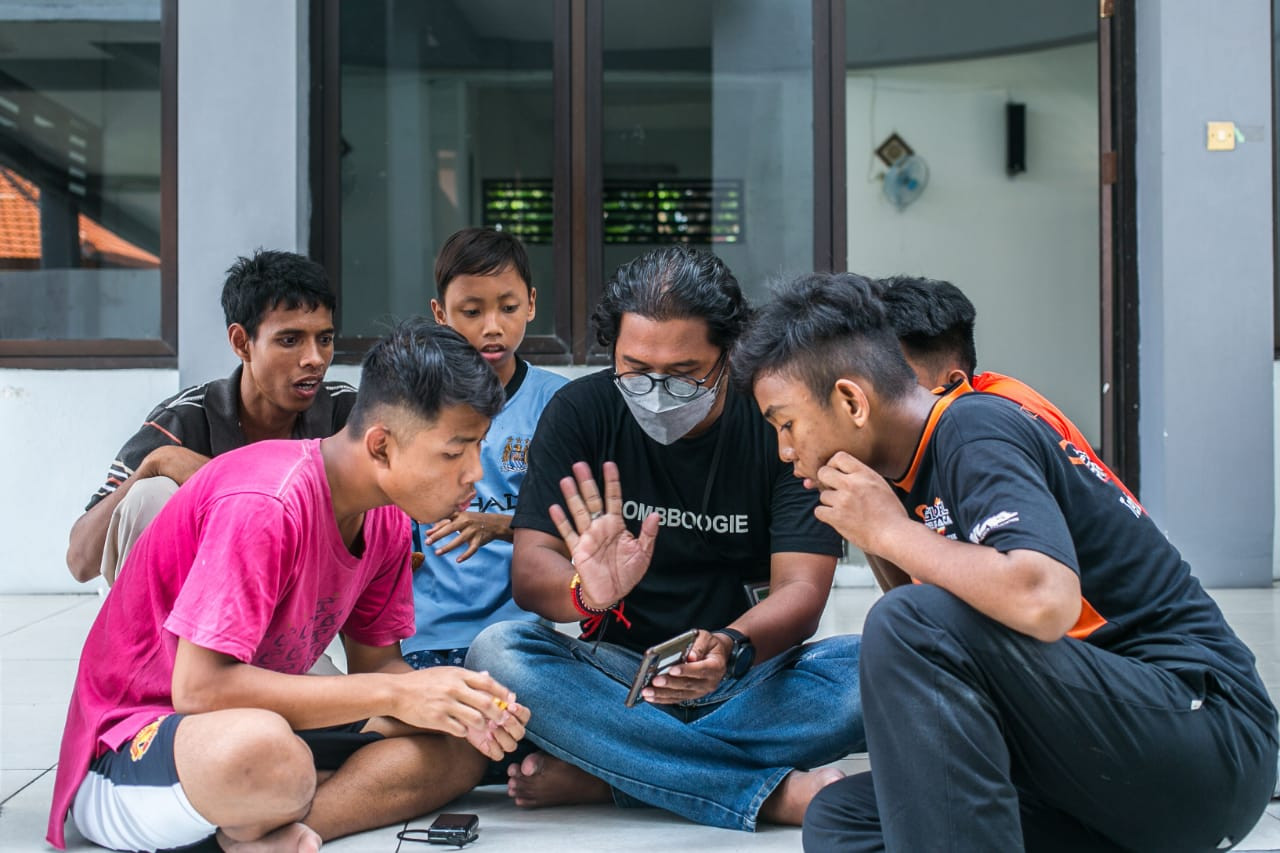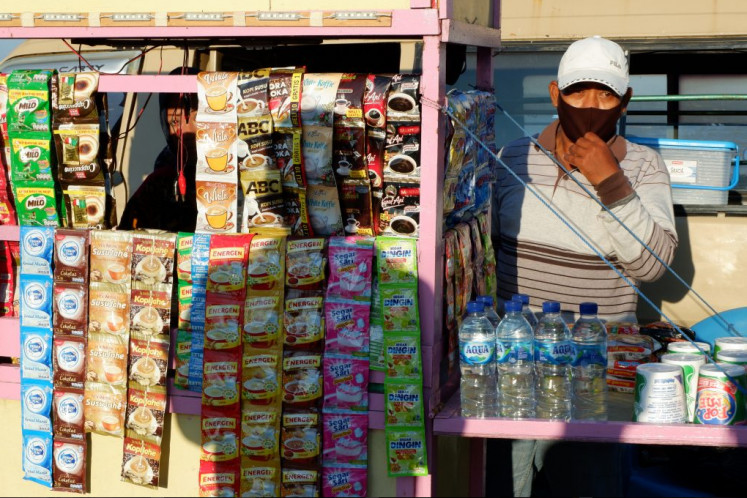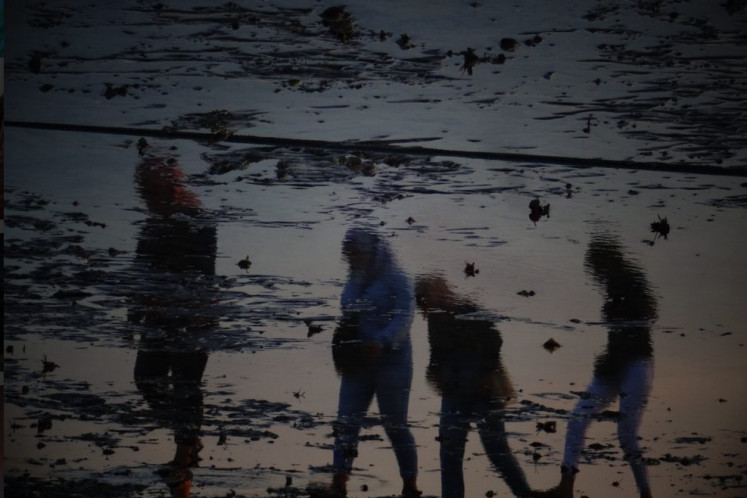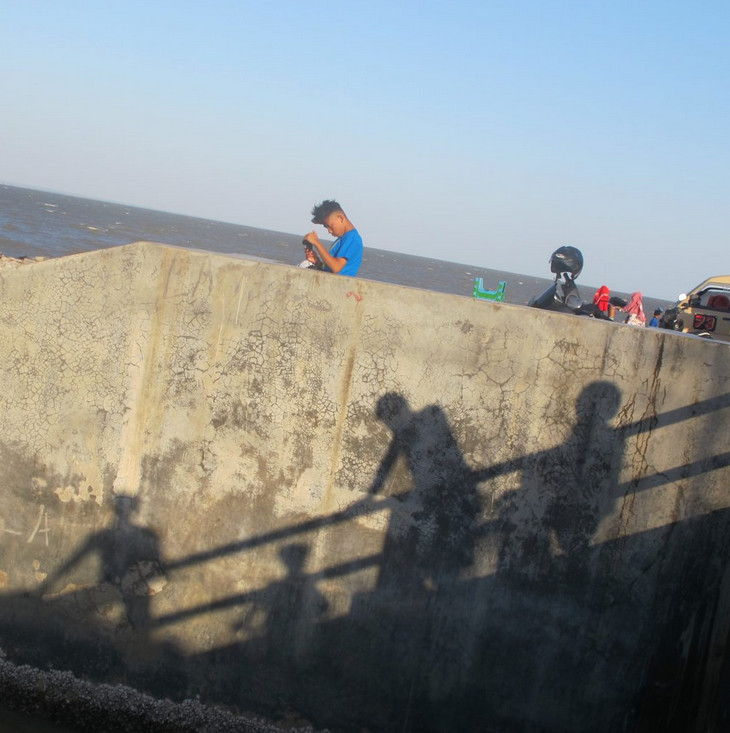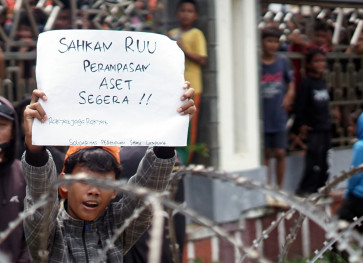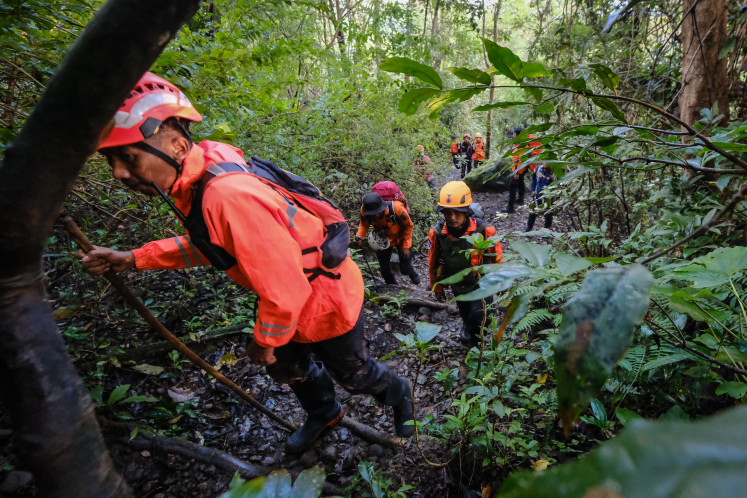Popular Reads
Top Results
Can't find what you're looking for?
View all search resultsPopular Reads
Top Results
Can't find what you're looking for?
View all search results'Cerita Kami': Youth photographers with disabilities tell their stories through pictures
How a mentor introduced five disabled teens with a passion for photography to the wider world.
Change text size
Gift Premium Articles
to Anyone
D
uring a visit to Liponsos Kalijudan, a community home managed by the Surabaya Social Affairs Agency that has an art studio, four youths were busy taking pictures in the large backyard.
Amateur photographers Pina, 19, Kiking, 16, Mukidi, 14, and Jacky, 12, had just seen their photographs displayed in the “Cerita Kami” (our story) exhibition on online art gallery Melihat Bersama (see together). The group exhibition was presented like a professional photo essay, about their daily lives at the Kalijudan community home and the surrounding area.
All four youths are deaf and mute, but that hasn’t stopped them from participating in Kalijudan’s annual photography workshop over the past 5 years.
“We regularly go hunting for photo locations. Last week, we went to a traditional tofu [cottage industry] in Ngagel and a smoked fish [restaurant] in Kenjeran,” said Arief, mentioning two popular establishments in the provincial capital of East Java.
Today, however, the four were staying on the home’s premises because the fifth member of their team, 20-year-old Omay, was sick, explained photography mentor Arief Budiman.
Arief says that Omay, who has Down Syndrome, and the other four youths are all talented in photography.
After almost two hours exploring and taking pictures in and around the area, the quartet take a break at the home’s mosque, taking turns showing the photos they took.
Suddenly, Kiking suddenly took back his camera to snap a photo of a housemate walking toward the mosque. He put a keffiyeh on the boy’s head and asked him to sit in a corner with the sun behind him.
This spontaneity is something Arief appreciates about the youths. "As much as possible, the raw photos should be good without [any] editing. So I’ve trained them to capture moments and the right lighting,” he said.
Accidental discovery
Arief met the Liponsos Kalijudan youths in 2015 at an exhibition where their paintings were on display and he was selling some batik products from his decades-old business. He immediately admired their work and personal stories.
He got in touch with the community home and offered to mentor the youths in painting and batik making. Kalijudan agreed, and asked Arief to create a workshop to help improve the children's motor and cognitive skills.
“The basic techniques of both batik making and painting train our concentration, imagination and motor skills,” said Arief.
Working with the adolescents wasn’t easy, and Kiking and Mukidi often asked to borrow Arief's smartphone to play mobile games as they waited for their batik to dry.
But then Arief showed them the camera on his phone and the photos he took with it. He saw their faces beam and immediately realized that photography better fit their interests, more than painting or batik making. So he added a photography session after each batik making workshop and donated two of his cameras for the class to use.
“[The] photography workshop is an unofficial [spin-off] program. But since then, Kiking and Mukidi have gotten serious about learning. Their friends Pina, Omay and Zacky then became interested, too,” recalled Arief.
Despite the enthusiasm of both Arief and the five youths, it wasn’t smooth sailing, particularly because none of the group used sign language. Kalijudan didn’t teach it, and the youths had never learned. So the six of them devised their own form of signing for basic communication.
They continue to use it today, with some Indonesian sign language making it into the mix when any of the group learned it.
Disabilitas Berkarya exhibits
As the youths’ techniques improved, Arief created the Disabilitas Berkarya (artwork of the disabled) account on Instagram and uploaded photos from the workshop. The response to the photos was unexpected. Several photography organizations invited the group to take part in exhibitions, and some even donated cameras.
In 2019, Disabilitas Berkarya had an opportunity to exhibit their work in Gurzenich, Koln, Germany. That same year, Kiking and Mukidi participated in a UNICEF photography workshop led by UNICEF senior photographer Giacomo Pirozzi, and Kiking received the Best Photographer award.
Hanging around: the photos taken by the teenagers capture their lives in and around the shelter. (Melihat Bersama website/Courtesy of Melihat Bersama/Rizki Kiking/Mukidi Septian/Pina/Omay/Jacky)The virtual exhibition has been the cherry on top for the group’s unexpectedly great few years.
Melihat Bersama curator Mamuk Ismantoro said the digital platform was not just an online art gallery, and was also an online learning space for emerging talents and an alternative space for professional artists.
"We saw Disabilitas Berkarya’s work, [and] we felt that their work was very personal, courageous, and it challenged the [public perception of disabled individuals]," said Mamuk.
The curatorial team eschewed adding titles or captions to the photographs as a deliberate device to represent the public's general indifference to the voices of people with disabilities.
"[‘Cerita Kami’] is an attempt to convey the idea that in the context of the creative process, our imagination should to transcend (spoken) language," said Mamuk.

